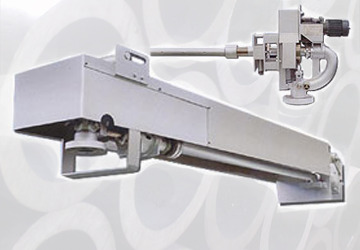
The Ultimate Guide to Sootblower Replacement Parts
Sootblowers are essential components of industrial boilers. Just like the name implies, they can remove soot and ash buildup from a boiler’s heat exchange surfaces.
Home » Popular Applications for Industrial Steam Boilers
Industrial steam boilers have been instrumental in the evolution of manufacturing since George Babcock and Stephen Wilcox Jr. patented the first steam boiler design in 1867. From heating to sanitation and industrial processing, they have uses that cross nearly every industry. This blog outlines just a few popular applications for steam boilers today.
One of the most common applications for industrial steam boilers across all industries is to heat your facility. Boilers combust natural gas or biomass to heat water which evaporates into steam, which moves through a series of pipes throughout your facility. The heat carried through these pipes can then heat areas through steam radiators, radiant heating panels embedded in the walls or floors of your facility, or heating air via a coil.
Boilers are efficient heating methods that are durable and built to last for 15-20 years or more when regularly maintained. Because of their reliability and efficiency, boilers have been used for industrial, commercial, and residential heating for generations and continue to provide superior heating.
Beyond facility heating, steam boilers are part of many other applications which often require unique characteristics and performance standards.
Steam boilers can efficiently convert thermal energy into electrical energy. First, the boiler uses the thermal energy from the combustion chamber to evaporate water into steam. Next, it builds pressure and turns turbine blades, causing the shaft to rotate, generating mechanical energy. Finally, the rotating shaft connects to an electric generator which converts the mechanical energy into electricity. This can be done at an individual scale to offset the energy costs of an industrial or manufacturing facility or at a large scale.
Food and beverage facilities are a prevalent industry that requires steam boilers. Because of the potential for cross-contamination and food-borne illness, a boiler must be able to generate high-temperature water and steam for sanitation in restaurants and food production facilities. Tools, surfaces, and even produce are either steam cleaned or wiped down with hot water to sanitize and eliminate bacteria and food-borne pathogens.
Boilers are also used for sanitizing in breweries but can require more individualized control. The steam boiler heats water to specific temperatures during the brewing process to create delicious beverages. The boilers used in brewery applications require precise temperature controls to achieve the perfect taste.
One of the unique applications for steam boilers is in the agricultural industry. Like the food and beverage industry, steam and hot water can sanitize the tools that harvest produce and tend to crops. Additionally, an application unique to agriculture is soil steaming.
According to the Agricultural Soil Steaming Association, soil steaming is “a green farming technique that kills weeds, bacteria, fungi and viruses without leaving any harmful residues.” This process removes most of the factors that can damage crops while encouraging higher yields. Depending on the size of the agricultural business, a high-capacity boiler may be required.
While it may not immediately come to mind when discussing boiler systems, steam is critical to pharmaceutical manufacturing. Steam is used for drying, disinfecting, rough cleaning, tableting, and other manufacturing steps. With pharmaceutical manufacturing, boilers must be capable of precise temperature control to purify medicines. Additionally, clean or pure steam is required to ensure that the disinfection process is free of any potential contaminants that can affect the final product. Clean steam comes from uncontaminated water that is free of any additives.
Steam heats and cools reactors for chemical processing to specific temperatures for catalyzing reactions. Depending on the type of reaction, volumes of steam output may fluctuate widely day to day or even hour to hour. Therefore, boilers used in this industry must operate in this cyclical manner efficiently without wasting steam or fuel.
Steam is essential throughout the textile manufacturing process. The first is pre-treatment, where hot steam is used on raw materials or fabrics to remove dirt and other impurities that would otherwise impact the quality of the textile. During the dyeing stage, precisely controlled steam provides the correct amount of heat and moisture necessary for each unique fabric to accept the dye optimally. Steam removes wrinkles in the fabric during the finishing step to prepare it for presentation. Large-scale steaming is a much more efficient method of wrinkle removal than the use of a traditional iron or heat alone.
At Industrial Boilers America, our boilers are suited to provide superior performance and can be programmed to reach your desired temperature specifications and capacity. In addition, our transparent business offers you hands-on service with complimentary engineering, all for a fraction of the cost of our competitors.
Request a quote today to learn more about our steam boiler offerings and how a new high-efficiency boiler could revolutionize your facility.
At Industrial Boilers America, we lead in providing the development, licensing, and deployment of Industrial Power plants. We partner with other leaders of communities and governments to foster long-term relationships that create sustainable energy, jobs, and social responsibility. Our philosophy that sustainability should be rooted in the betterment of the ecosystem rather than profit allows us to provide services that will enable our partners to reinvest in themselves, resulting in a sustainable community.

Sootblowers are essential components of industrial boilers. Just like the name implies, they can remove soot and ash buildup from a boiler’s heat exchange surfaces.

Boilers provide essential heating and steam generation for industries ranging from power production to manufacturing. To ensure safety, efficiency, and functionality, rely heavily on sophisticated

Industrial boilers are essential for keeping the world moving. Understanding the critical industrial boiler parts ensures efficient operation, safety, and longevity of equipment. Main Industrial